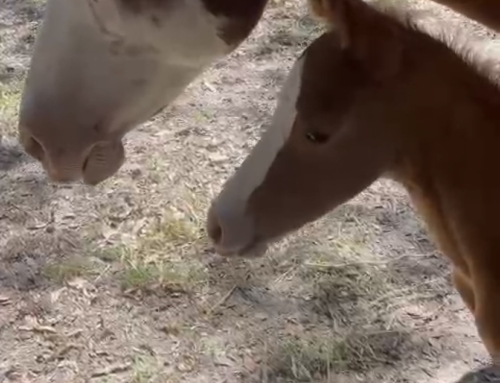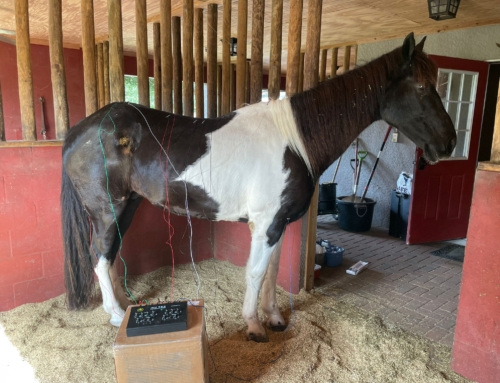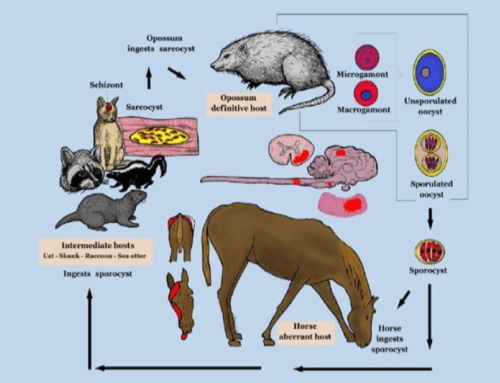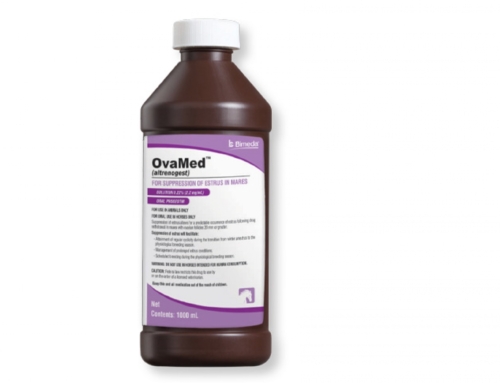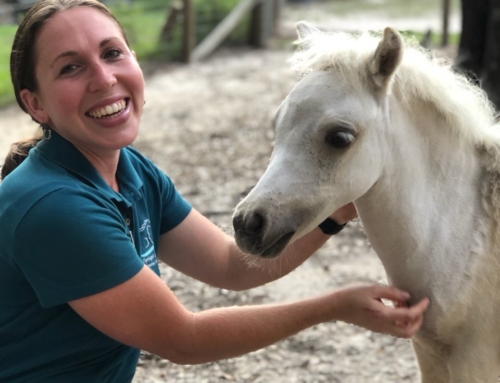Equine Wellness: Pythiosis
Pythiosis- commonly known as swamp cancer, Florida leeches or kunkers- is an infection caused by Pythium insidiosum. Pythium insidiosum is an oomycete, meaning that it is not a true fungus or mold but is actually an aquatic pathogen. It was first identified in 1901, and has been described in numerous continents and climates. Pythium insidiosum seems to flourish in subtropical regions. In the United States, Florida and Texas are over represented in Pythium infection rates: Florida is responsible for 60% of the recorded infections, while Texas accounts for approximately 25%. Georgia, Louisiana, Mississippi and Alabama are also represented in recorded infection rats. As such, the wet and humid south is ideal for pythiosis and fungal infections. Regional climate changes appear to have a huge impact on increased pythiosis cases. A surge in infection rates is noted when a drought is followed by wetter weather. During a drought, lakes and ponds recede, and plant growth occurs in these previously flooded locations. When wetter conditions follow and water covers this new vegetation, this is an ideal breeding ground for fungus and mold. Pythium insidiosum resides in standing water and moist soil, and infects small wounds on horse’s legs, lower abdomen, chest and face.
At first, infected lesions are small, circular and irritated areas. Generally, these mild appearing wounds are not a cause of concern. Many owners start with cleaning and treating with topical antibiotic ointments, but the lesions seem to worsen despite treatment. Eventually, these wounds can turn into large tumor-like ulcerated masses. These lesions are extremely itchy, and contain dead tissue with a strong odor, yellowish discharge, draining tracts and they may contain kunkers. Kunkers are clumps of necrotic (dead) cells. They are grey to yellow, pea-sized and gritty. There has been no evidence that Pythium can be spread from animal to animal or that infected horses can contaminate their environment. There is no breed, age or sex predilection, so all horses have a similar risk for contracting pythium.
Often, pythium wounds are confused as bacterial or fungal infections or summer sore lesions. However, pythium lesions usually do not completely heal with antibiotic, antifungal or surgical treatments. If wounds are not identified early in the course of infection, the lesions will continue to grow and will eventually erode ligaments, tendons and bone which will lead to euthanasia for humane reasons.
Long standing pythium infections are much less likely to respond to treatment than infections that have been caught promptly (generally within two weeks). So early identification and aggressive treatment is essential. Pan American Veterinary Labs has developed a simple blood test that detects pythium elements, which has greatly assisted in recognition for these cases. All that is needed for testing is a tube of blood. In addition, this lab tests for another oomycete, Lagenidium.
Our practice uses a multi-modal approach to treating pythiosis. We utilize immunotherapy to boost the infected horse’s immune system and increase recognition of the pythium infection. We use an intravenous immune stimulant, as well as a pythium specific immunotherapy. The pythium immunotherapy is associated with a very high success rate-published data indicates the immunotherapy has almost 100% cure rate for acute cases (<15 days) but is less effective in chronic cases (>60 days). The overall success rate is reported about 75%. In addition, we treat the wounds topically with a Chinese herb salve and wound spray. At times, we surgically remove the lesions once they begin to shrink in size, but this greatly depends on the size and location of the lesion. If the entire lesion is not removed, there is a high rate of reoccurrence. It is important for owners to monitor for these lesions, so that if your horse has pythiosis, we can treat early and aggressively.
More information available on Dr. Kurtz’s Equine Wellness: Anhidrosis and Other Summer Medical Issues video.


